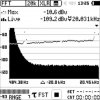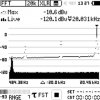There's no standard. And it works fine with majority of devices. Also it's only the balanced input that has 2kohm. Single ended is 10k which is what majority of modern devices use.Sorry on this one, you're mistaken. 2K is ridiculous and you know it, John. You've gone after one metric at the expense of source compatibility and performance. It's a mistake to pass the buck to the source components. A preamplifier is designed to take varying source impedances and levels and buffer them without messing up the performance of the attached components.
47-50K is the defacto input impedance for line sources into a typical preamplifier/integrated line input. It's also the defacto input impedance of an MM RIAA stage and has been this way for many, many decades. Go peruse a few hundred service manuals for amplifiers and preamplifiers and tell me what the "standard" is. I can tell you, it's closer to 50K than 2K.
20-25K was favoured by pro power amps input impedances in the 1980s.
Also there's simply no reason for me to design for every use case possible. It's meaningless. And it's not beneficial.


